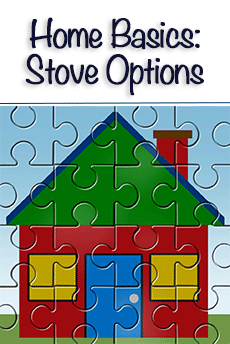 Smooth top stoves have a modern look to them, and the term encompass both glass and ceramic topped cookers. Many love them while others hate them, so what are the pros and cons of a smooth surface stove in comparison with regular electric cookers?
Smooth top stoves have a modern look to them, and the term encompass both glass and ceramic topped cookers. Many love them while others hate them, so what are the pros and cons of a smooth surface stove in comparison with regular electric cookers?
PROS: The Benefits of Smooth Top Stoves
1. Sleek Modern Looks
Nobody can dispute the elegant and sleek, modern look of a smooth top stove with its glossy black glass or ceramic hob. They look smart and chic in comparison with regular electric rings and their relatively ugly drip pans. The regularity of color is another benefit, and many people will do anything to get away from the traditional white stove in their kitchen.
2. Easy to Clean
Ceramic top stoves are easy to clean – we shall use the term ceramic to include glass here. Once the hob has cooled down it is simply a matter of cleaning up spillage with a damp cloth. There is no trying to get beneath the electric rings to clean up properly – smooth top stoves are exactly what they say they are! There are no crevices, nooks or crannies for liquids to run into – just a smooth flat surface! A sponge scratcher is genuinely all you need to get the ceramic hob perfectly clean.
3. Potential Counter Space
A ceramic hob can be used as extra counter space. Perhaps not for preparing food, but certainly for plates and serving up food. In fact, you can cook on one ceramic burner, and serve directly onto a plate sitting on the cold burner beside it. This saves transporting hot pans from the stove to the counter, and in this respect the ceramic hob is safer than a regular electric cooker.
CONS: The Disadvantages of a Smooth Top Electric Stove
1. Heat Danger
This could be the most or least important disadvantage of smooth top stoves depending on your point of view. It is certainly true that once the redness disappears it is impossible to tell if the surface of a ceramic hob is hot or cold – but the same is true of a regular stove.
The difference lies in the fact that it easier to place a hand on the surface of a regular stove, since the whole top is flat – unlike an electric ring where the cooking surface is obvious. Yes, most show a red light when the hob is still hot, but it is still easier to burn your hand.
2. Glass or Ceramic Can Be Damaged
Most smooth top stove surfaces are liable to be scratched or damaged if you drop a metal pan on it. Replacement costs are not cheap, and in some cases it is not much more expensive to simply buy a new cooker. They are not delicate as such, although you should be careful how you clean them. There are special glass and ceramic cooker cleaners available that give them a deep shine, and you can use special scrapers to remove burned-on deposits safely without damage.
3. Only Certain Types of Cookware Are Suitable
Pots and pans should have smooth bottoms, since rough bottoms can scratch the surface. It is this intimate contact that improves the heat transfer properties of ceramic hobs. Aluminum pots are not recommended, since the aluminum can mark the surface, and painted enamel pans can stick to the top at higher temperatures.
Variations in Heating Principle
Not all such stoves are the same, and they are also available with a smooth stainless steel finish. Some forms use the principle of magnetic induction to heat a magnetic pan, rather than the radiant and conducted heat used in regular ceramic cookers – although they are not inexpensive, costing several thousands of dollars. Their main benefit is more even and faster cooking, though not all foods respond well to quick cooking.
Another benefit is that induction stoves only heat the pot – not the hob, which you can touch without burning your fingers. This makes for improved efficiency, since no heat is lost between the hob and the pan. All of that said, however, the most attractive property of ceramic hobs or smooth top stoves to the majority of users is their glossy, flat top which is so easy to clean.



About The Author: Kenneth Le
More posts by Kenneth Le